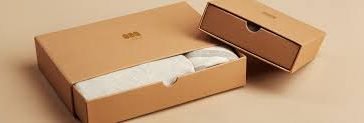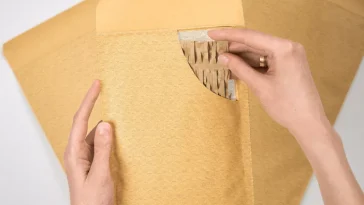Imagine walking down a grocery aisle. Your eyes scan shelves crowded with products, but one box catches your attention: its vibrant hues, elegant contrasts, and magnetic energy make you stop. You pick it up, intrigued. That’s the power of color in packaging—it doesn’t just sell a product; it tells a story, sparks emotion, and creates a connection.
For businesses, choosing the right colors for custom packaging isn’t just about aesthetics. It’s a strategic decision rooted in psychology, culture, and brand identity. The wrong color can make your product fade into the background. The right one? It can turn a first-time buyer into a lifelong fan.
In this guide, we’ll explore how to harness the psychology of color to design packaging that resonates with your audience, amplifies your brand, and drives sales. No jargon, no fluff—just actionable insights to help you make confident, human-centered decisions.
Why Color Matters: The Science of First Impressions
Humans are visual creatures. Studies show that 90% of snap judgments about products are based on color alone, and packaging design influences 70% of purchasing decisions. Color isn’t just decoration—it’s a silent salesperson.
But why does color hold such sway over us? It’s wired into our biology and culture. For example:
- Red raises our heart rate, signaling urgency or excitement (think Coca-Cola or Target).
- Blue triggers trust and reliability (seen in brands like Facebook and Pfizer).
- Green evokes nature, health, and sustainability (Whole Foods, Starbucks).
Your packaging’s color palette doesn’t just need to look good—it needs to feel right. Let’s break down how to align your choices with your brand’s personality and your audience’s subconscious expectations.
Step 1: Understand Basic Color Psychology
Before diving into trends, start with the fundamentals. Here’s a quick guide to common color associations:
| Color | Emotions & Perceptions | Best For |
|---|---|---|
| Red | Energy, passion, urgency | Food, fashion, clearance sales |
| Blue | Trust, calm, professionalism | Tech, finance, healthcare |
| Green | Nature, growth, eco-friendliness | Organic products, wellness, outdoors |
| Yellow | Optimism, youth, affordability | Kids’ products, budget brands |
| Black | Luxury, sophistication, power | High-end cosmetics, electronics |
| White | Purity, simplicity, minimalism | Skincare, tech, premium goods |
| Purple | Creativity, royalty, spirituality | Beauty, wellness, artistic brands |
| Pink | Playfulness, femininity, sweetness | Beauty, confectionery, youth brands |
Pro Tip: These associations aren’t universal. Cultural context matters! For example, white symbolizes purity in Western cultures but represents mourning in parts of Asia. Always research your target audience’s cultural norms.
Step 2: Align Colors with Your Brand Identity
Your packaging should be an extension of your brand’s personality. Ask yourself:
- What emotions do I want customers to feel?
A skincare brand might opt for soft blues and greens to convey calm and purity, while a bold energy drink could use neon yellows and blacks for edginess. - Who is my audience?
Gen Z might gravitate toward bright, unconventional palettes (think Glossier’s millennial pink), while older demographics may prefer muted, classic tones. - What’s my industry?
A luxury jewelry brand might lean into black and gold for elegance, while a vegan snack company could use earthy greens and browns to emphasize sustainability.
Case Study: Tiffany & Co.
The iconic “Tiffany Blue” is patented (Pantone 1837)—a soft robin’s egg blue that screams exclusivity and timeless elegance. It’s instantly recognizable, evoking luxury and romance. The color alone has become synonymous with the brand, proving that consistency pays off.
Step 3: Use Color to Solve Problems (Yes, Really!)
Great packaging doesn’t just look pretty—it works. Here’s how color can address common challenges:
Problem 1: “My product gets lost on shelves.”
Solution: Contrast is key. Use complementary colors (opposites on the color wheel) to make your packaging pop.
- Example: Purple and yellow (Milka chocolate) create a bold, eye-catching combo.
Problem 2: “I want to highlight eco-friendliness.”
Solution: Greens, browns, and recycled kraft paper tones signal sustainability. Add textures like matte finishes or embossing for a tactile, earthy feel.
- Example: Lush Cosmetics uses minimalist black and white with green accents to emphasize its ethical values.
Problem 3: “My brand feels outdated.”
Solution: Refresh with modern gradients or duotones. Spotify’s vibrant duotone designs, for instance, feel fresh and dynamic.
Step 4: Test, Iterate, and Refine
Colors look different on screens vs. in print. Always:
- Print physical mockups to see how colors translate under lighting.
- Test with your audience. Run surveys or focus groups—does the color align with what they expect from your brand?
- Consider accessibility. Ensure text contrasts with backgrounds (e.g., avoid yellow text on white).
A Quick Story:
A coffee startup initially chose a sleek black bag for its premium roast. But sales were sluggish. After testing, they switched to warm terracotta tones with gold foil accents—sales jumped 40%. The new palette felt inviting and artisanal, resonating with their “crafted with care” messaging.
Step 5: Don’t Ignore Trends (But Don’t Be a Slave to Them)
While Pantone’s Color of the Year (hello, 2024’s Peach Fuzz) can inspire, trends come and go. Balance what’s hot with what’s authentic to your brand.
2024 Trends to Watch:
- Biophilic Colors: Earthy greens, ocean blues, and sandy neutrals (thanks to the “naturecore” movement).
- Neon Accents: Pops of electric lime or hot pink for Gen Z appeal.
- Warm Neutrals: Beige, cream, and terracotta for a cozy, humanized feel.
Common Mistakes to Avoid
- Too Many Colors: Cluttered palettes confuse the eye. Stick to 2–3 primary colors.
- Ignoring Cultural Nuances: A color that’s lucky in one country might be taboo elsewhere.
- Forgetting Functionality: A glossy finish might look luxe but could scratch easily during shipping.
Final Thought: Color is a Conversation
Your packaging’s colors are a dialogue with your customers. They whisper, “This is who we are. This is what we stand for.” Whether you’re a startup or an established brand, thoughtful color choices can turn a simple box into a memorable experience.
So, next time you design packaging, ask: What story do I want these colors to tell? Then paint it boldly.
Ready to Bring Your Vision to Life?
At PacksDo, we combine cutting-edge design with deep expertise in color psychology to create packaging that captivates. Request a free consultation today—let’s craft something unforgettable.

